Our Service

Intrauterine insemination
( Intrauterine insemination, IUI )

Testicular Sperm Extraction
( Testicular Sperm Extraction, TESE )

IVF
( In Vitro fertilization )

ICSI
(Intra Cytoplasmic Sperm Injection)

Oocyte/Sperm/
Embryo Cryopreservation
( Oocyte/Sperm/
Embryo Cryopreservation )

Pre-implantation
Genetic Testing
( Pre-implantation Genetic Testing,
PGT )
IVF
( In Vitro fertilization )

In Vitro Fertilization (IVF) is to grow oocyte and sperm in a test tube or petri dish for in vitro fertilization in an environmental chamber until it becomes an embryo, which will be transferred into the woman’s uterus.
Intracytoplasmic Sperm Injection (ICSI) is In Vitro Fertilization (IVF), but it fertilizes by injecting one sperm into an oocyte directly under high magnification to maximize a fertilization possibility. This technique is used when a man has a severe problem with sperms, i.e., sperms obtained from the testicle mass surgery, and a man who has to process the Pre-implantation Genetic testing (PGT).
Couples who should undergo IVF:
- A woman has both blocked fallopian tubes.
- A woman has severe endometriosis problems, or a history of fascia, i.e., a pelvic infection that causes a misshapen uterus and fallopian tube.
- A woman has a problem with ovary function disorder and fails other treatment techniques, such as chronic anovulation, Polycystic ovary syndrome (PCOS), and ovarian insufficiency.
- A woman is in a stage of old age (more than 40 years old) and has a low possibility of success with other treatment approaches.
- A man has a low density of sperms, abnormal shape, and motility of sperms, or has no sperms from ejaculation.
- A couple has an unknown cause of infertility after the preliminary screening.
- A couple who has been treated with IA technique, but is still unsuccessful.
Steps of IVF
- A woman sees the doctor during the first three days of the menstruation period for preliminary screening. Hormones from the pituitary gland and ovaries are examined. Take an ultrasound to assess the uterus and ovaries, and measure the egg density.
- A woman will have a trigger shot (subcutaneous injection) for ovarian stimulation for 8-12 days at a different amount, depending on the individual, to stimulate the follicle to have an appropriate number and size. During the later stage, the woman will also receive the ovulation prevention injection.
- During receiving the trigger shots, the woman’s eggs are measured with an ultrasound periodically to ensure follicle growth. A blood test is possible in some cases to check hormone levels. The doctor will schedule 2-3 follow-ups during the ovarian stimulation period.
- When the size of follicles in the ovary is appropriate or is bigger than 18-20 ml., the woman will be injected with fertility agents. The schedule to collect the eggs 34-36 hours after injecting fertility agents will be made.
- On the collecting day, the man comes also comes to collect seminal fluid by stopping ejaculation for 3-5 days before the day.
- After egg collection, the oocyte and sperm are fertilized in the lab to grow into a quality embryo.
- A woman comes back in 3-5 days after egg collection day to transfer the embryo into the uterus (if the transfer is processed during the ovarian stimulation cycle, it is called embryo transfer or Fresh Cycle).
- In some cases, the doctor recommends freezing the embryo, such as exceeding amount of collected eggs at each time or inappropriate uterine wall for embryo transfer. The doctor will schedule the woman to follow up during the first two days of the following menstruation cycle to take an ultrasound to evaluate the uterus and ovary and get medicines to prepare the endometrial tissue (Frozen Cycle).
- After transferring the embryo to the uterus for 14 days, the woman will have a blood test to evaluate pregnancy hormones.
